Fresh Paint
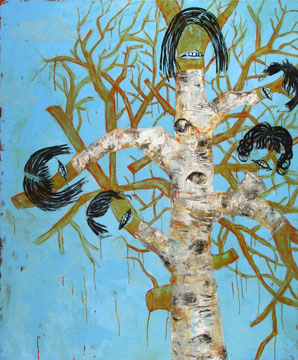 |
| Deborah Randall |
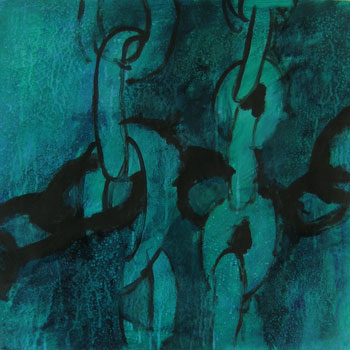 |
| Richard Keen |
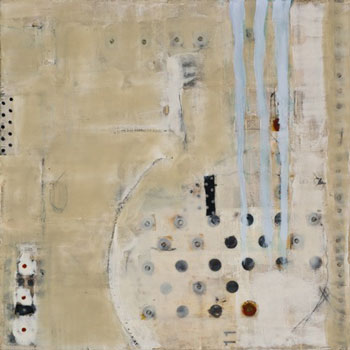 |
| M.R. Hedstrom |
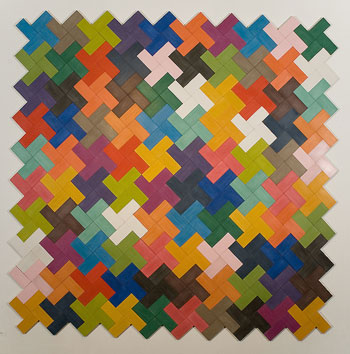 |
| Patrick O'Rorke |
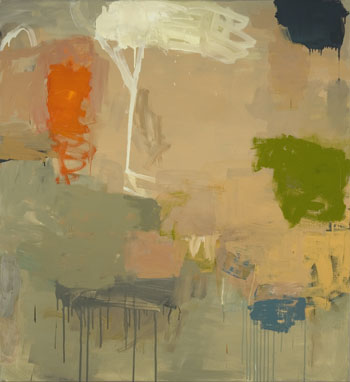 |
| Richard Garrigus |
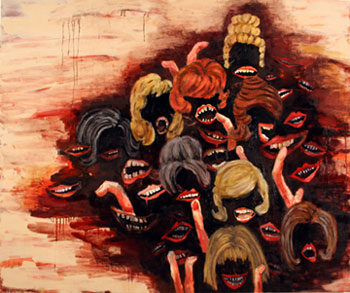 |
| Deborah Randall |
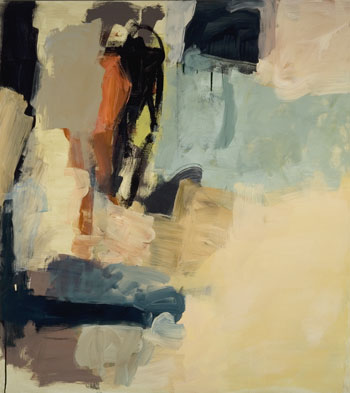 |
| Richard Garrigus |
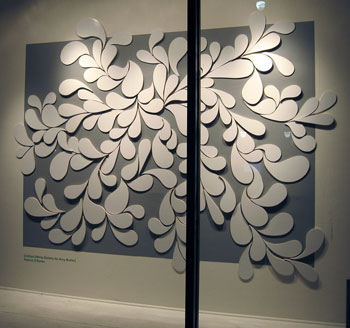 |
| Patrick O'Rorke |
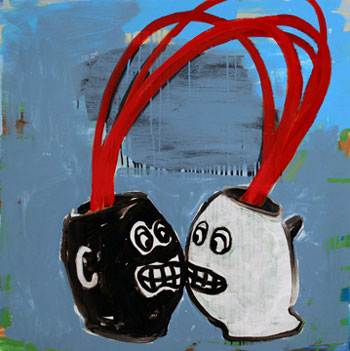 |
| Deborah Randall |
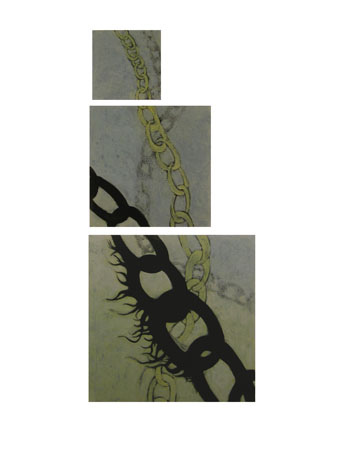 |
| Richard Keen |
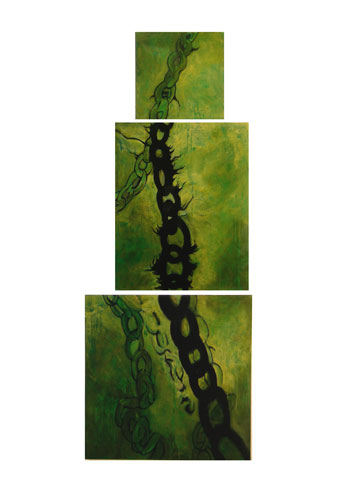 |
| Richard Keen |
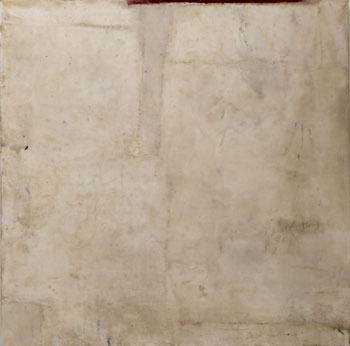 |
| M.R. Hedstrom |
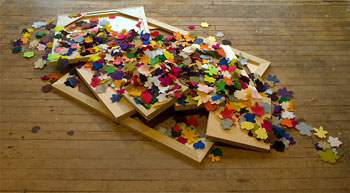 |
| Patrick O'Rorke |
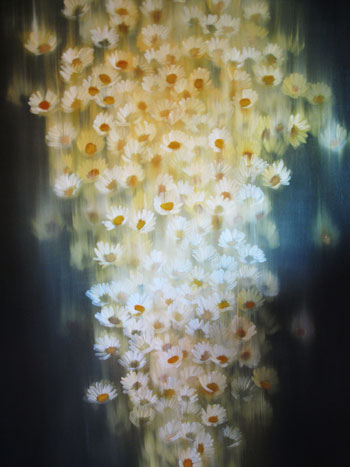 |
| Tanja Kunz |
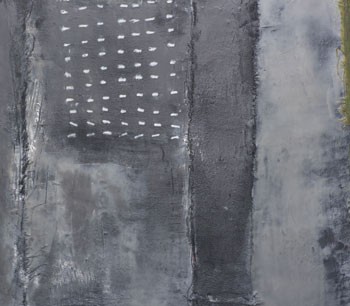 |
| M.R. Hedstrom |
For November we are laying it on thick... and sometimes thin with a muscular and vivid show, Fresh Paint, featuring work by Richard Garrigus, Richard Keen, Tanja Kunz, Deborah Randall, M.R. Hedstrom, Patrick O'Rorke.
Good painting is convincing but not necessarily by presenting reality. A good painting wants, needs, and is absolutely certain of its components whether refined or clunky, minimal, lacquered, suspended, doodled, illuminated, whispered, scraped, or spilled. The core of critic Clement Greenberg's formalist ideology was that paint should be paint, that paint's own inherent qualities, so suppressed throughout history, were exactly what made the medium cogent in the 20th century. Greenberg championed the paint-being-paint modus operandi of Jackson Pollack, and this attitude towards the actual physical presence of paint, as an entity not a tool, influences the processes and aesthetics of many artists today.
What is the excitement over this stuff, paint? How does it still have the power to fascinate? Paint, a substance of alchemical make-up, or as artist and writer Mira Schor put it, a "fecal" nature, can be an extension of the body like any by-product of living. It can be a superficial veneer, or a medium in which to suspend a feeling or concept. A residue of motion, of life lived, a byproduct of intention, an interference, an extension of perception.
With the passing of the 20th century into the 21st, artists and thinkers have further evolved the formalist celebrations and distillations of the intrinsic qualities of paint. As a result artists like Richard Garrigus make paintings based on the internalization of the natural world. He says "I begin a painting by making marks based on a barely perceptible inner sensation and build gradually on those marks in a kind of call-and-response pattern." In this way painting is a relationship, simultaneous action and reaction, the natural inclinations of paint and of the artist exist in utter symbiosis. M.R. Hedstrom describes her process of painting in encaustic by admitting that "radical destruction and rebuilding are a disturbing but necessary part of the process. It sometimes feels like being in a fight." Indeed her works, though textural and colorful, retain the same sense of catharsis that is at the core of her process. Her work is emotional, replete with trauma and joy.
The physical, emotional, and sensational forces at work in painting were eloquently discussed by philosopher Gilles Deleuze. In writing about Francis Bacon, he passionately described the effects of his paintings as an experience of "the way the body escapes from itself, that is, the way it escapes from the organism." Deleuze proposed that paintings reflect and absorb sensation, we recognize them as part of the world and as as something beyond. This kind of elemental shifting of molecules, the imprinting of brain chemistry, and the possible interactions with the painted surface is testament to the strength and relevancy that painting and artists hold.
The powerful ability to displace is key in Richard Keen's moody paintings. Although his subject is traditional marine iconography of Maine, Keen paints the ocean from below water, depicting chains and ropes with sense of floating detachment. The paint, as murky a medium at its salty subject, has a strong character: by using mixed mediums and formats he creates images that are ominous and also nostalgic. Tanja Kunz is also invested in specific imagery, using paint and mixed media to create a spiraling interaction between microcosm and macrocosm. The infinite exists in swarms of flowers, lines, and hybrid forms. The delicacy of representation is mixed with the infinite push and pull between energy and order.
In its absolute failure to mimic life, to move mountains, or ignite cosmic change, painting is a treasure trove of irony, self-deprecation, humor and bathos. Deborah Randall says "in the broadest sense, my work addresses the human condition as it relates to the experience of being, existence, the passage of time, and mortality." Personal events, characters, and body parts are marooned in the no-mans-land of the painting, disfigured and allowed to take on new contexts. The static feedback generated from the process of a funky accumulation of paint results in work with a darkly humorous, in-your-face, punk attitude. This attitude is also in Patrick O'Rorke's work. He says "as much as I love Barnet Newman he is in fact dead, and I am grateful that he is." Although O'Rorke is interested in surfaces and how things look, he coaxes the superficiality of Formalism to come about 180 degrees. Fueled by an interest in text, music, pattern, pop-science and many other things, O'Rorke invites diverse content and subject matter in his slick works. Though driven by color, surface, placement, format etc., his paintings and installations are both earnest and tongue in cheek. A celebration of how painting can draw from sources without judgment or hierarchy, O'Rorke is equally and indiscriminately inspired by astrophysics and Black Sabbath albums.
So, come see the gallery swaggering with paint bravado and experience what paint (of all types) really looks like.
-Celeste Parke
"I believe that painting in our meaning is structures. Each application of paint to a surface is a structure. This is, of course, self-evident, but a super-structure of meaning can occur One can have various motives for doing it. And here that difficult motif comes in. I believe that a ruthless accumulation of structure reworkings leads to one meeting one's motif. One's life motif so to speak. That which one has and does not know that one has it.
A sort of geology, as when, in a constant process, sedimentation and erosion makes the earth we live on like it is now, without any meaning in itself in a rational sense, but accepted as that upon which we live in this life."
-Paul Klee
"It has to do with the surface of both, which at the end becomes erased, or more erased. Before that, they were richer, full of things. Uglier, but more precise maybe."
-Gerhard Richter
Fresh Paint is on view November 4 - 28. An opening First Friday reception will be held on November 6, 2009 from 5 - 8 pm.
Whitney Art Works is open Wednesday - Saturday 12 - 6 pm. or by appointment.
© Whitney Art Works, All Rights Reserved. 45 York Street, Portland, Maine 04101 Voice: 207-780-0700
You are viewing the printer-friendly version of Fresh Paint